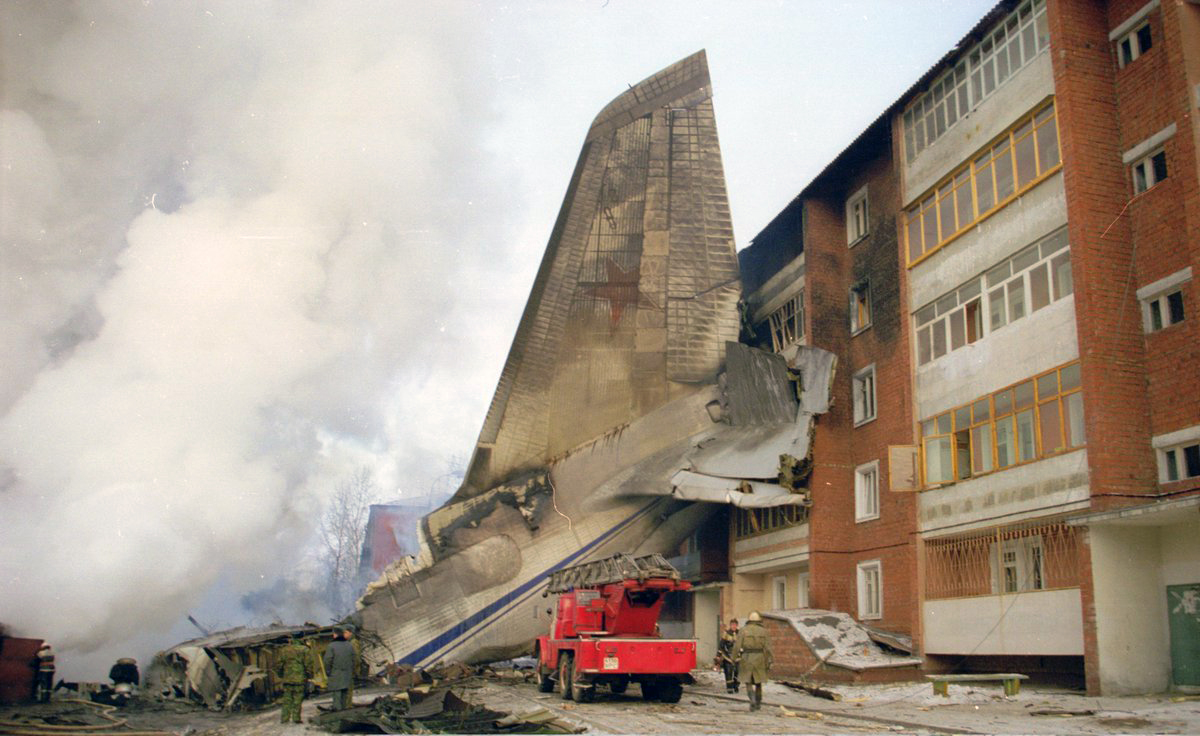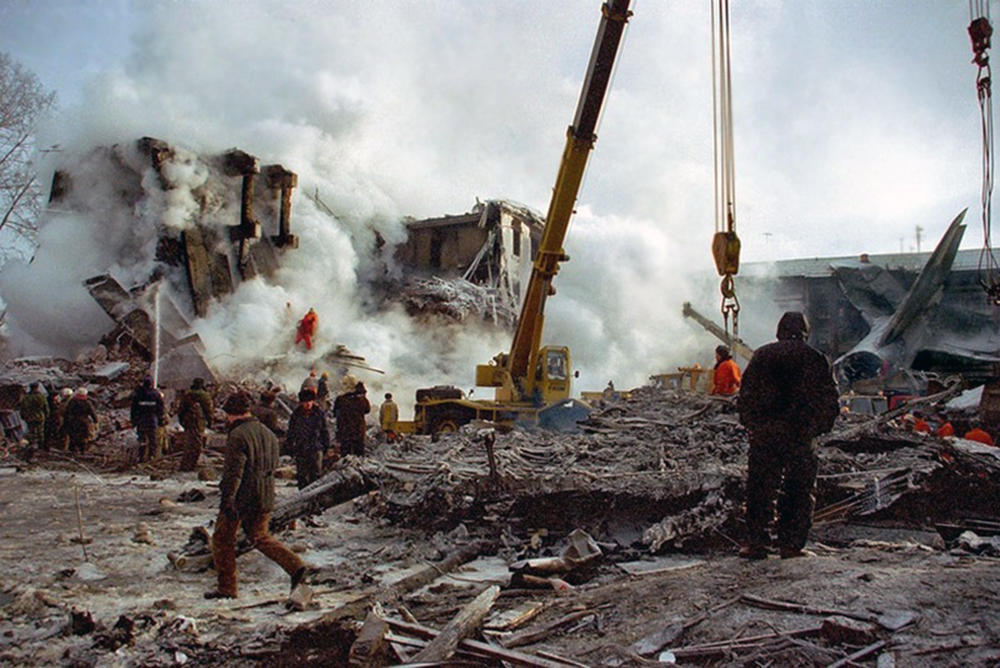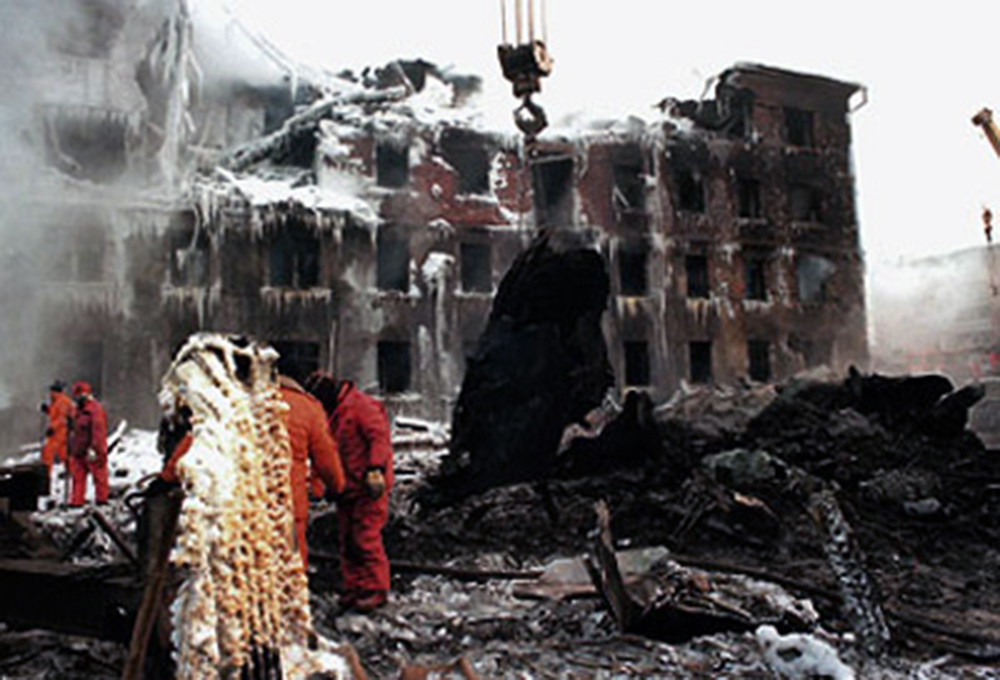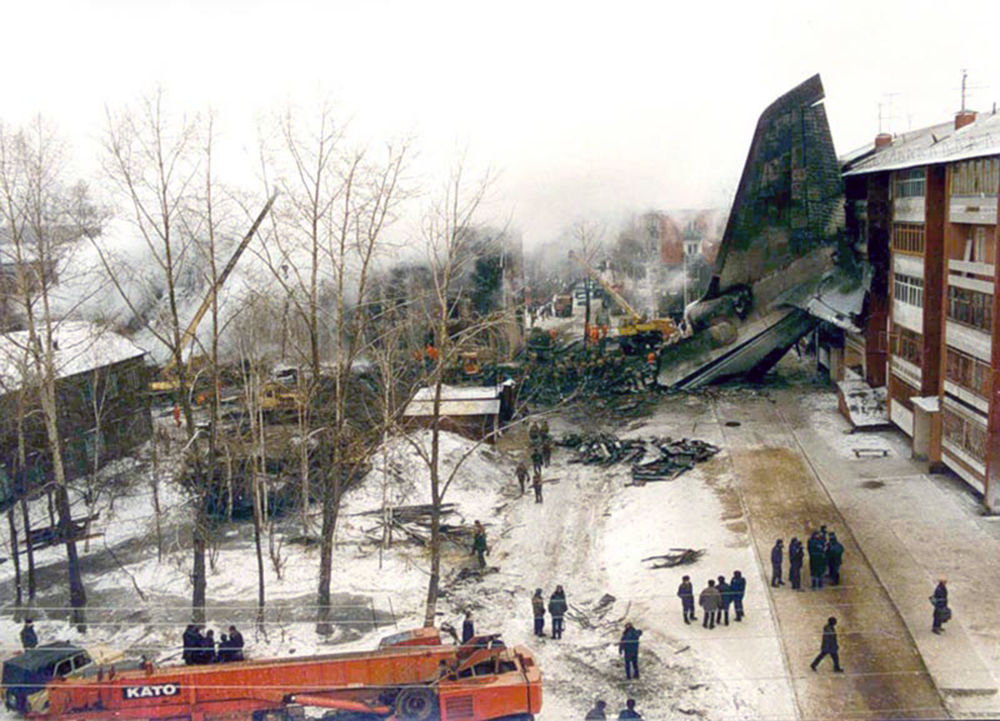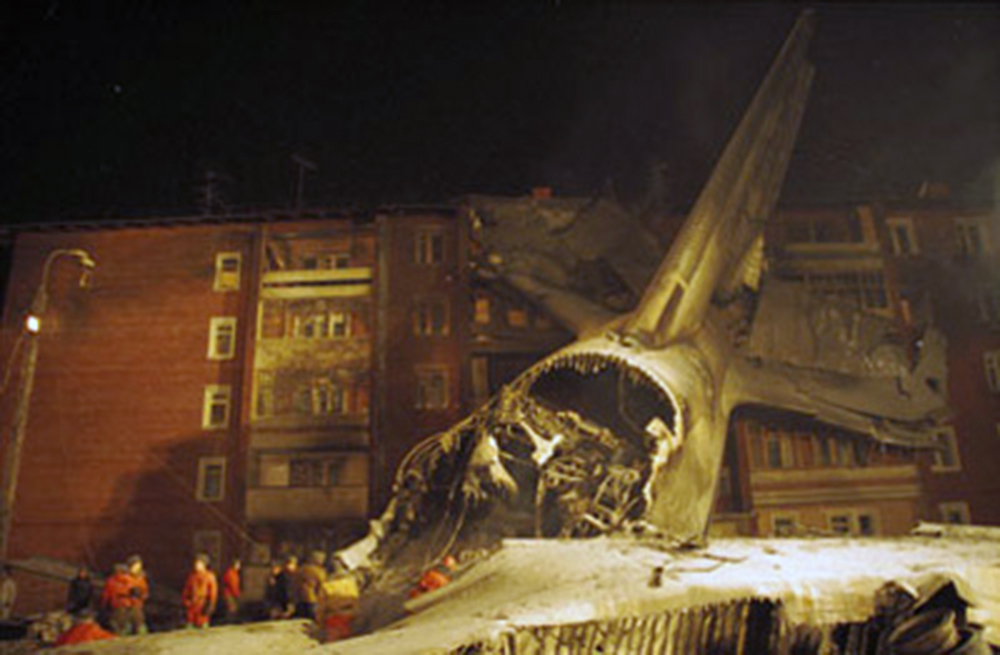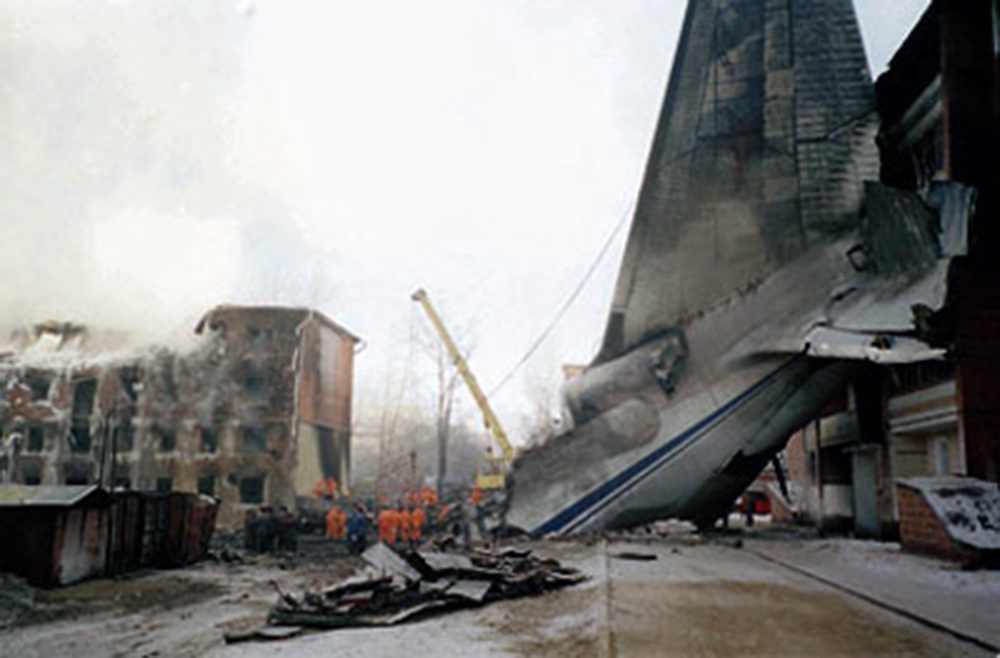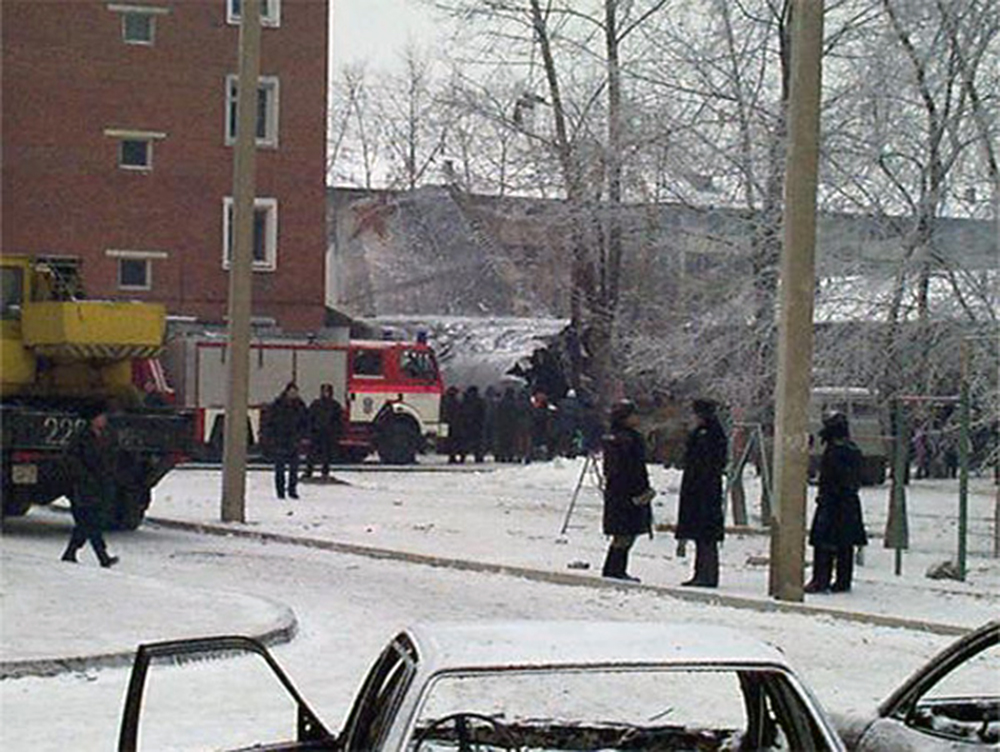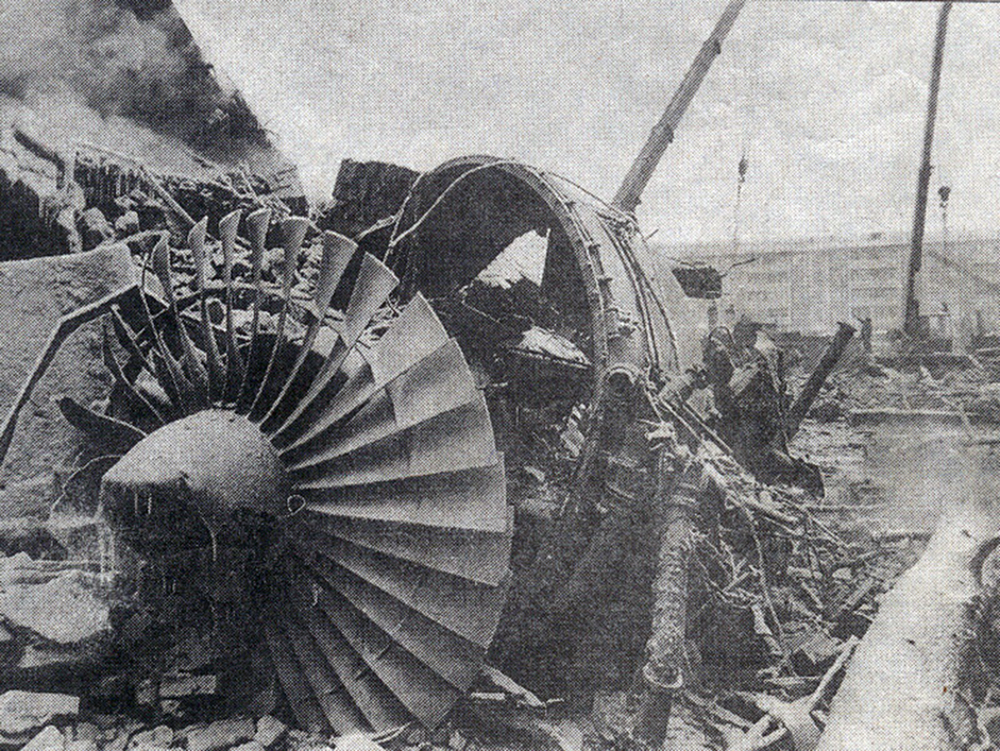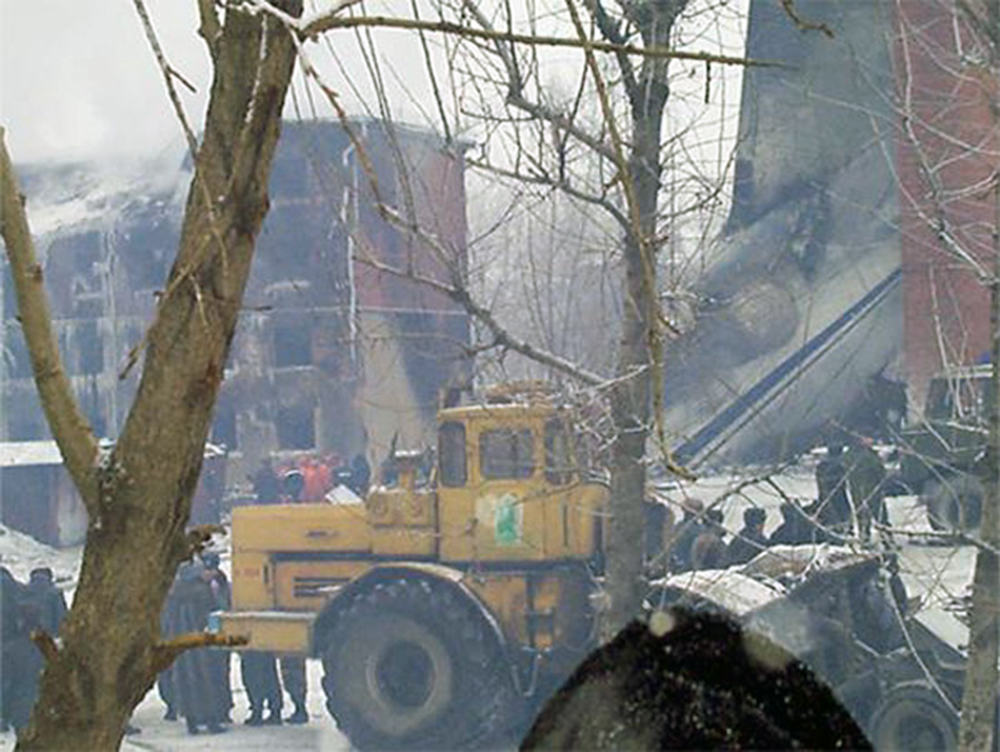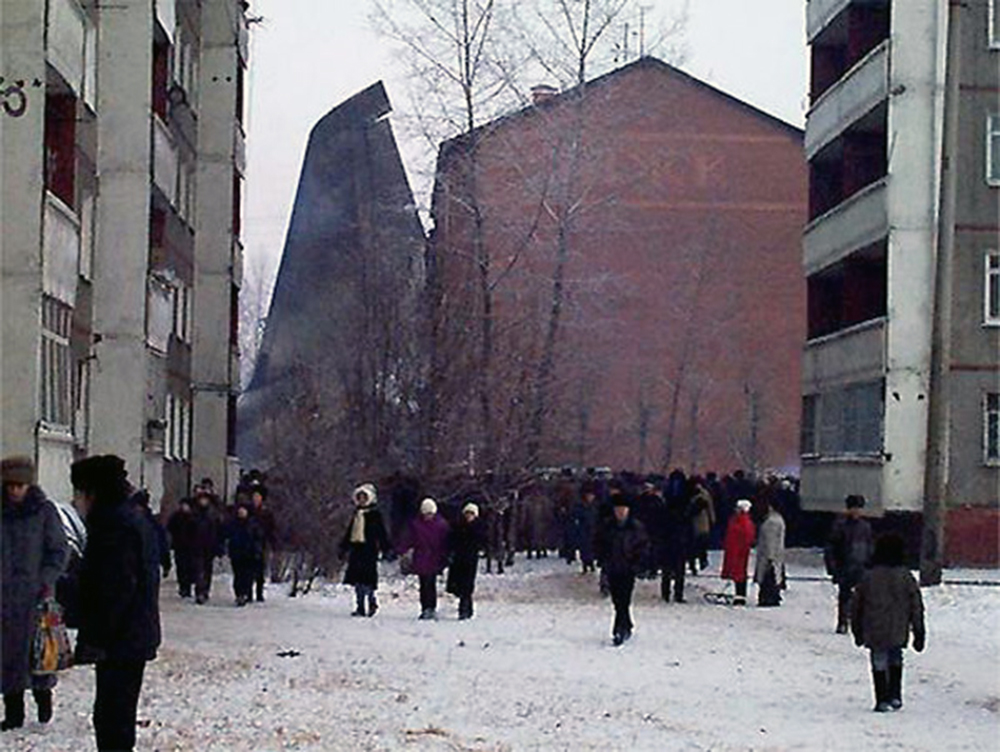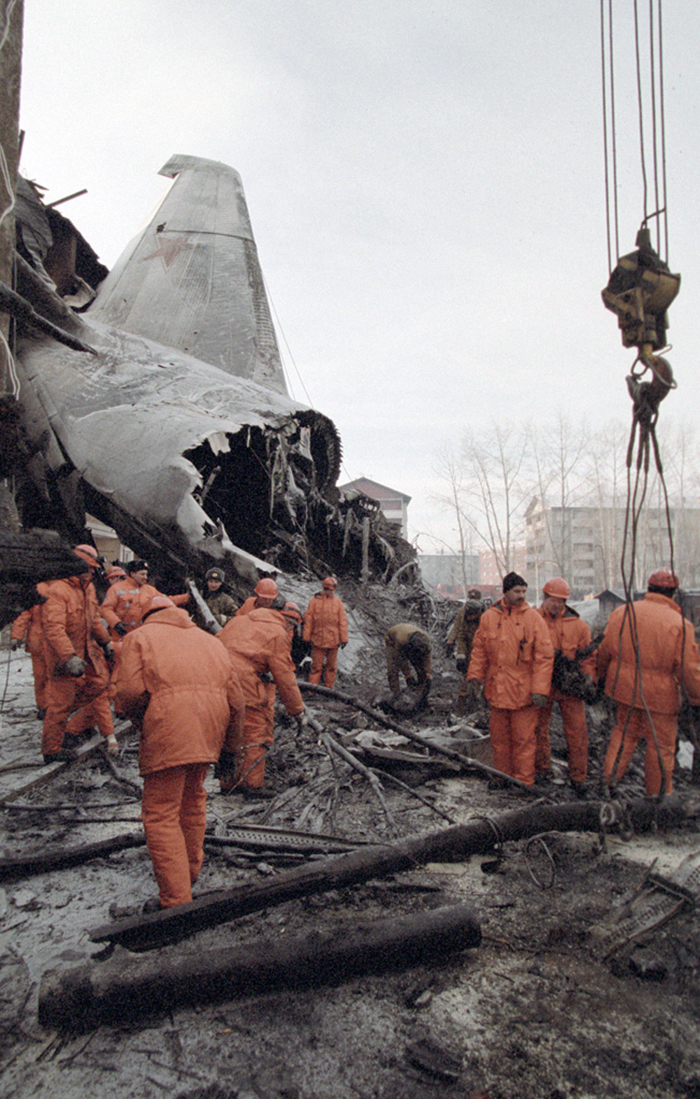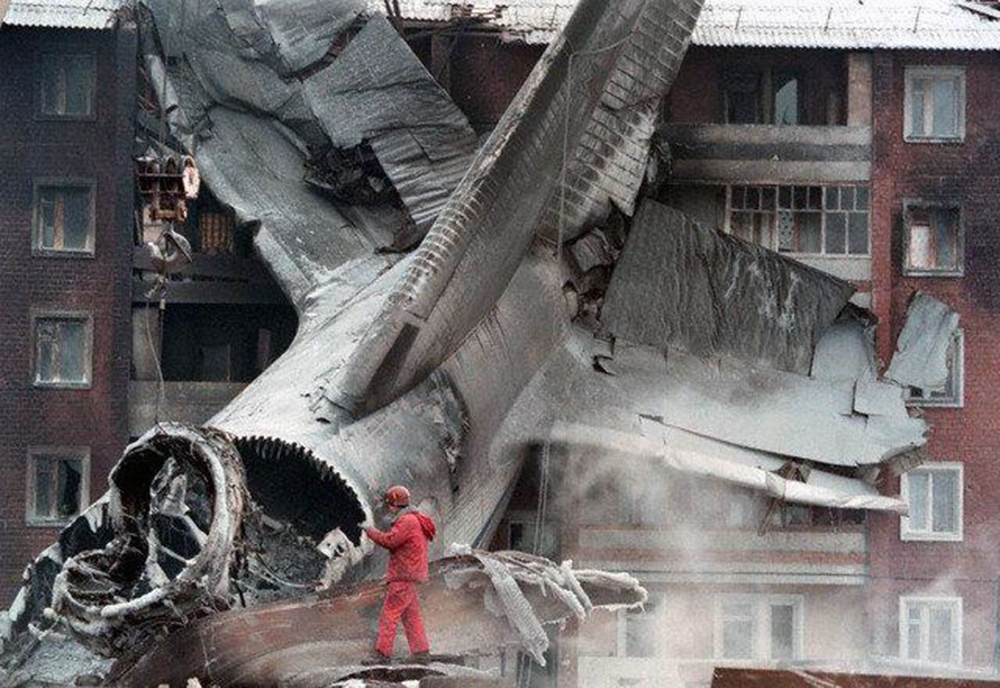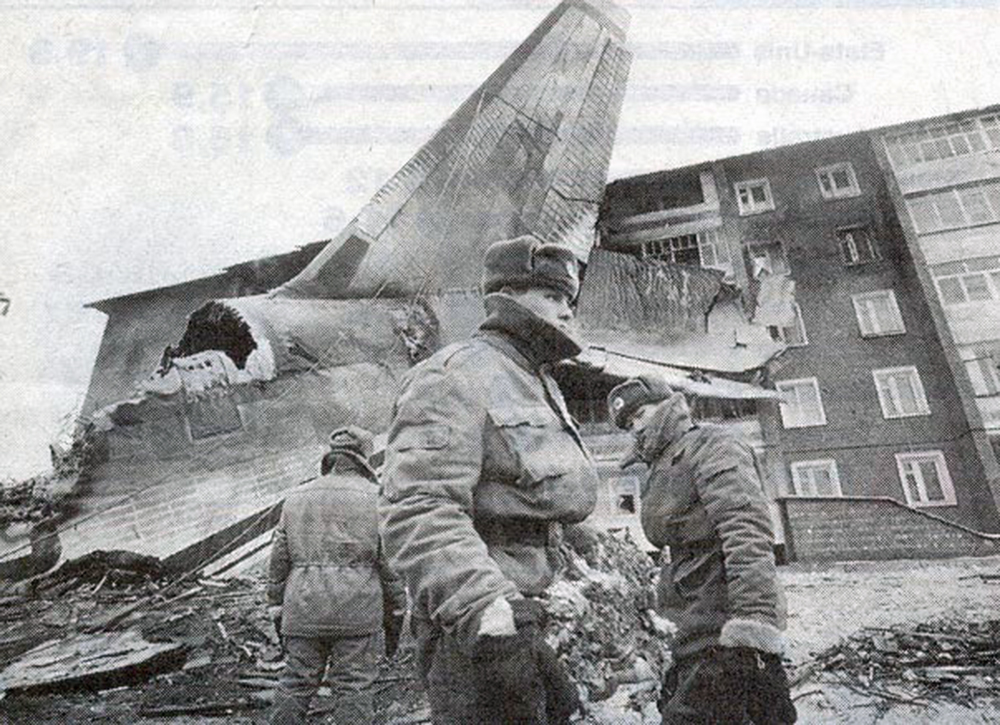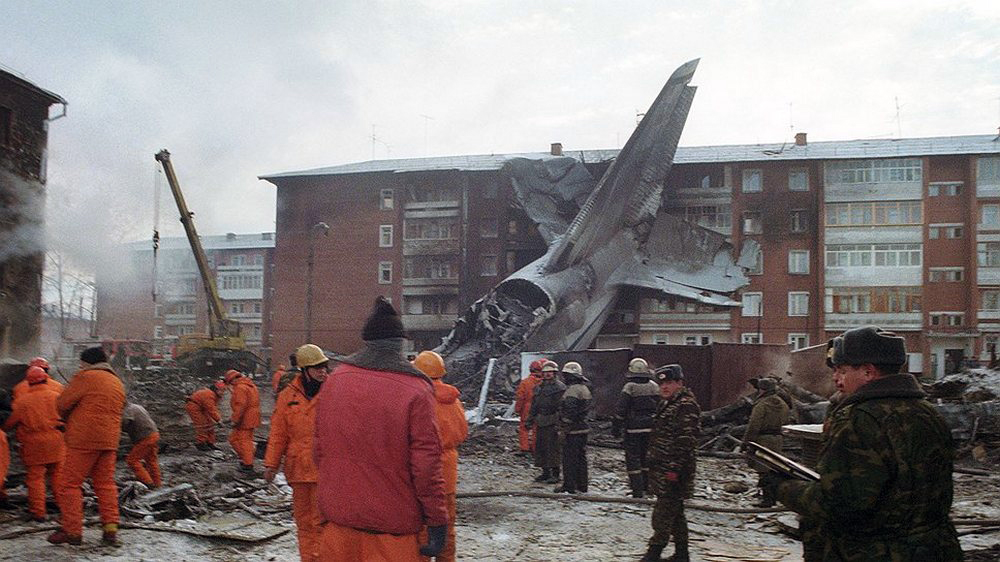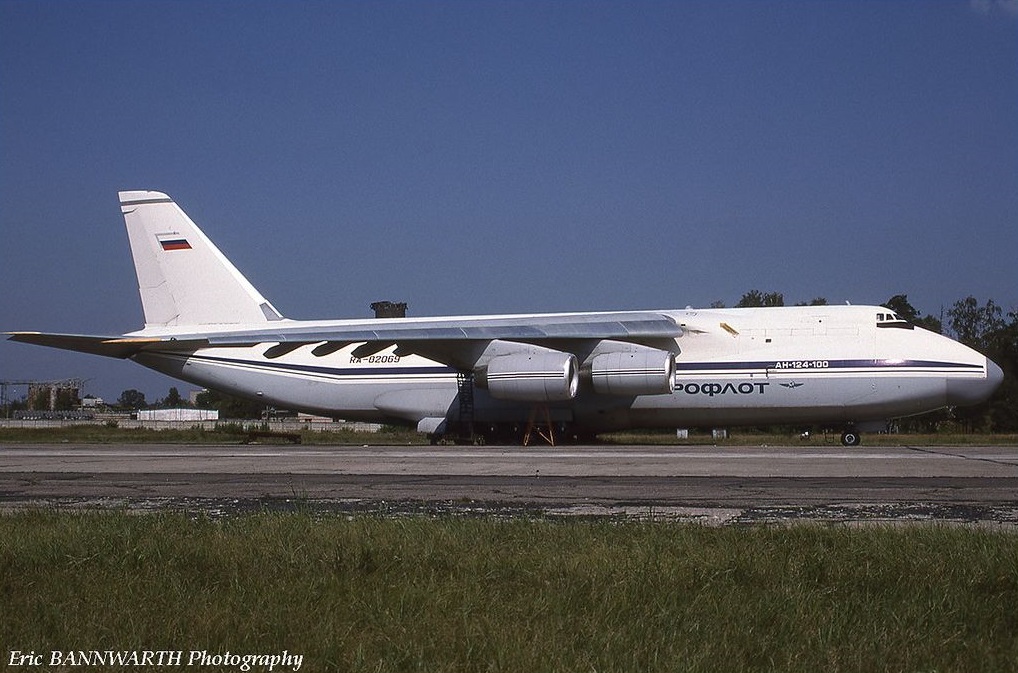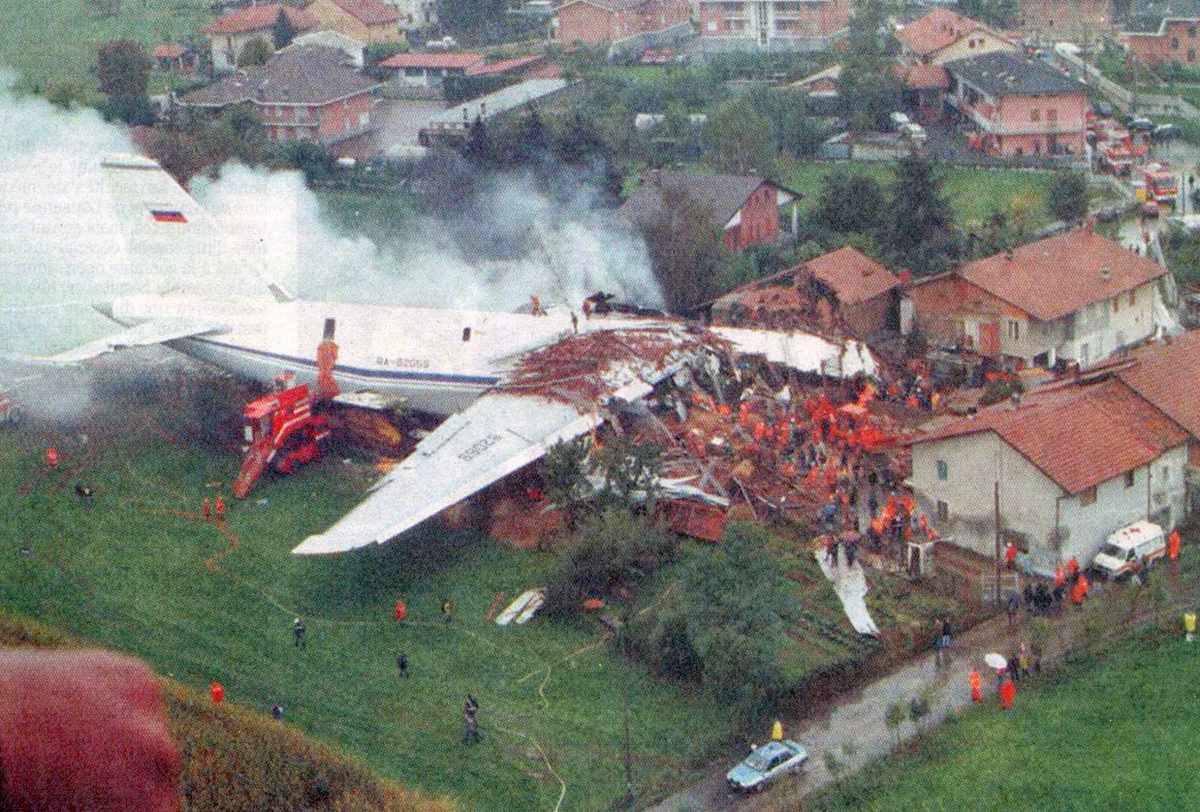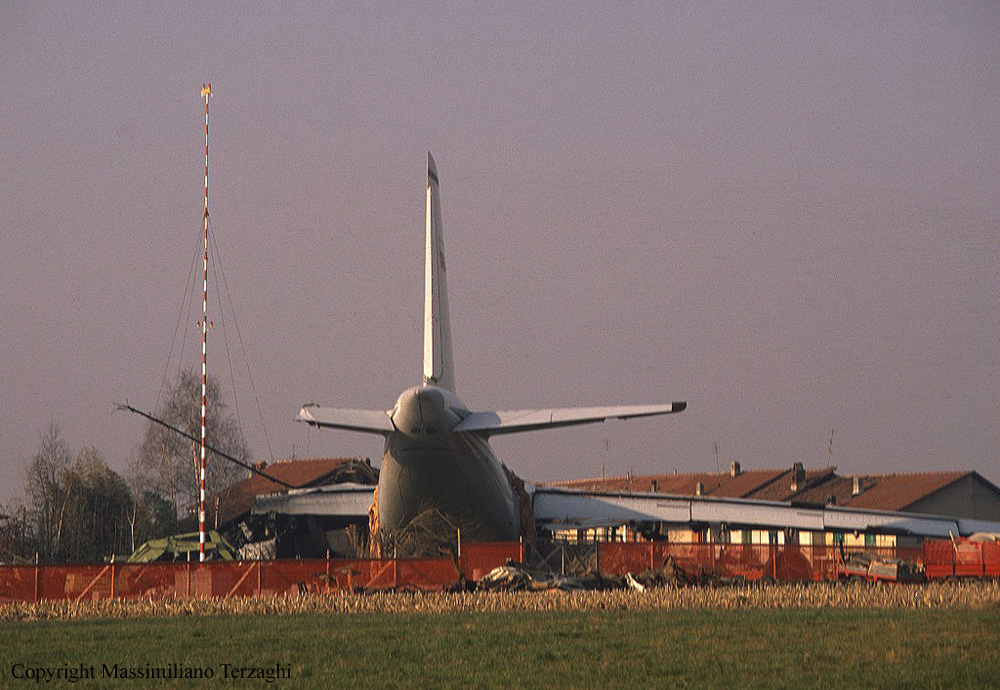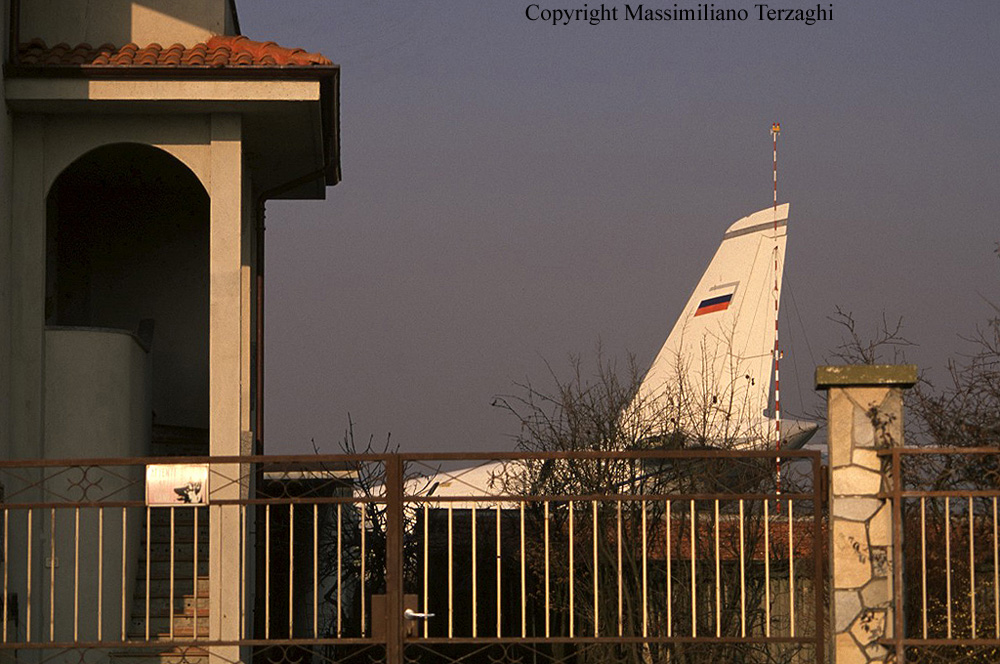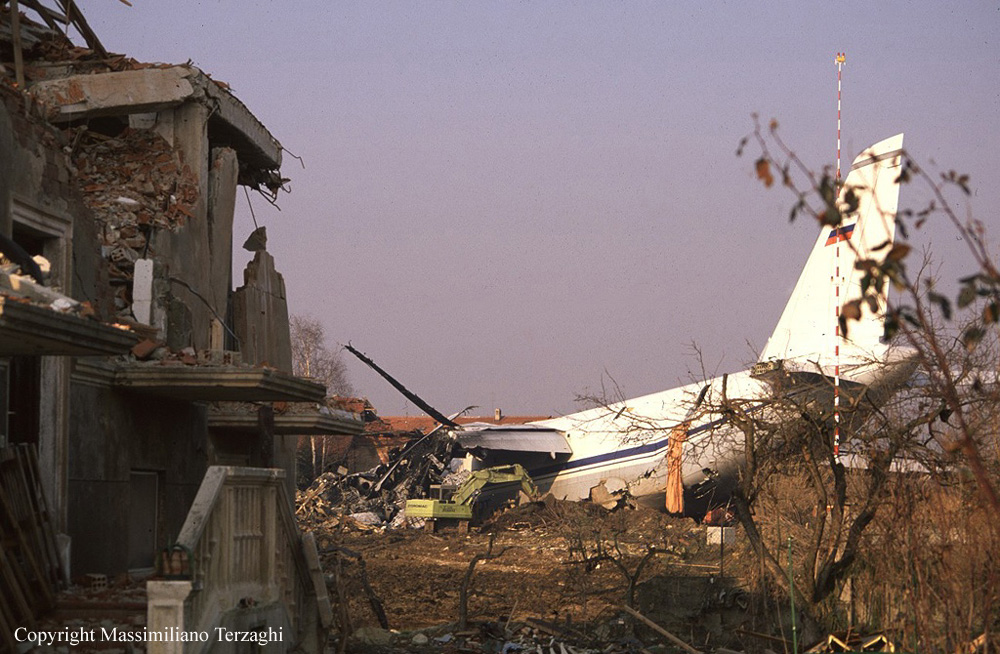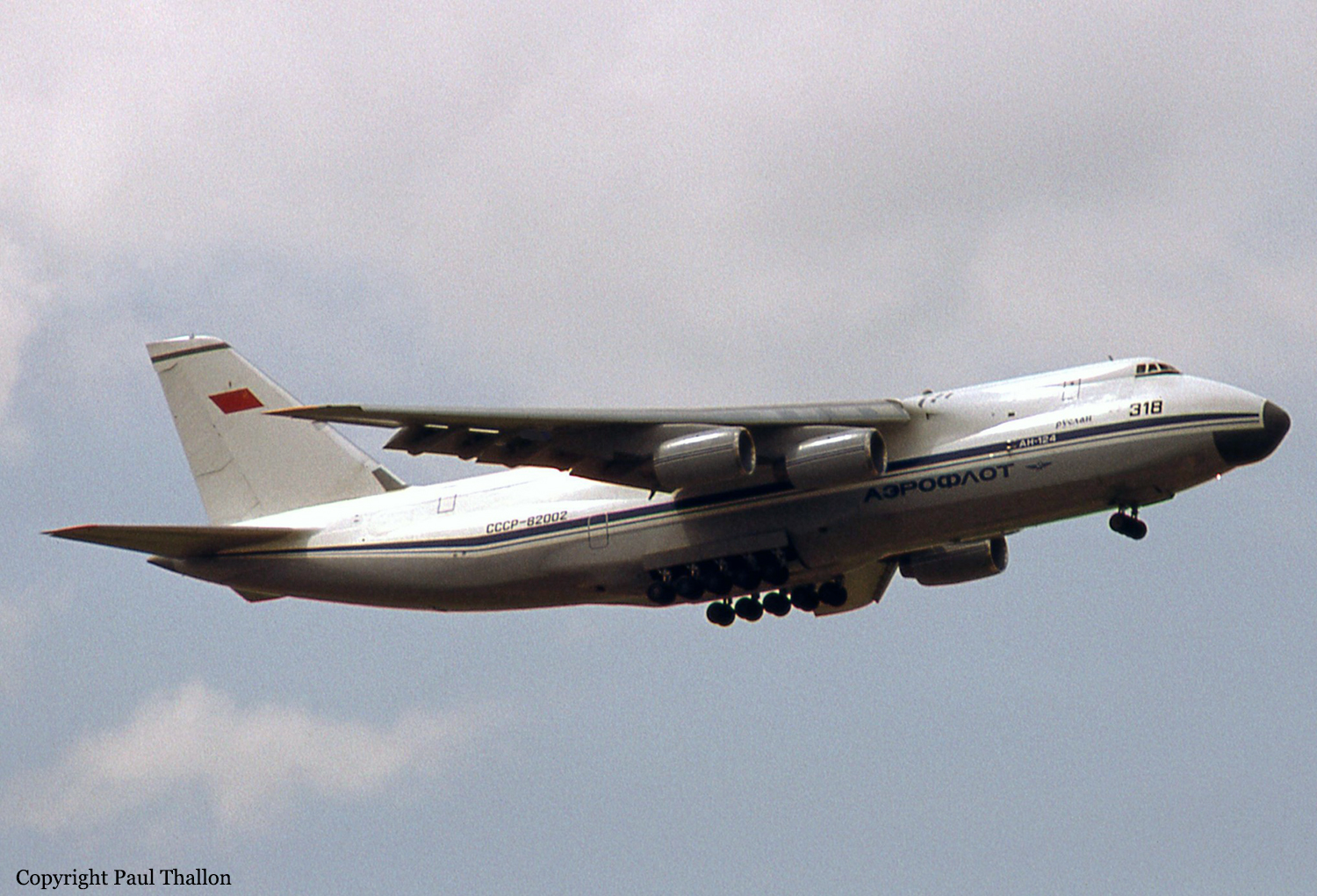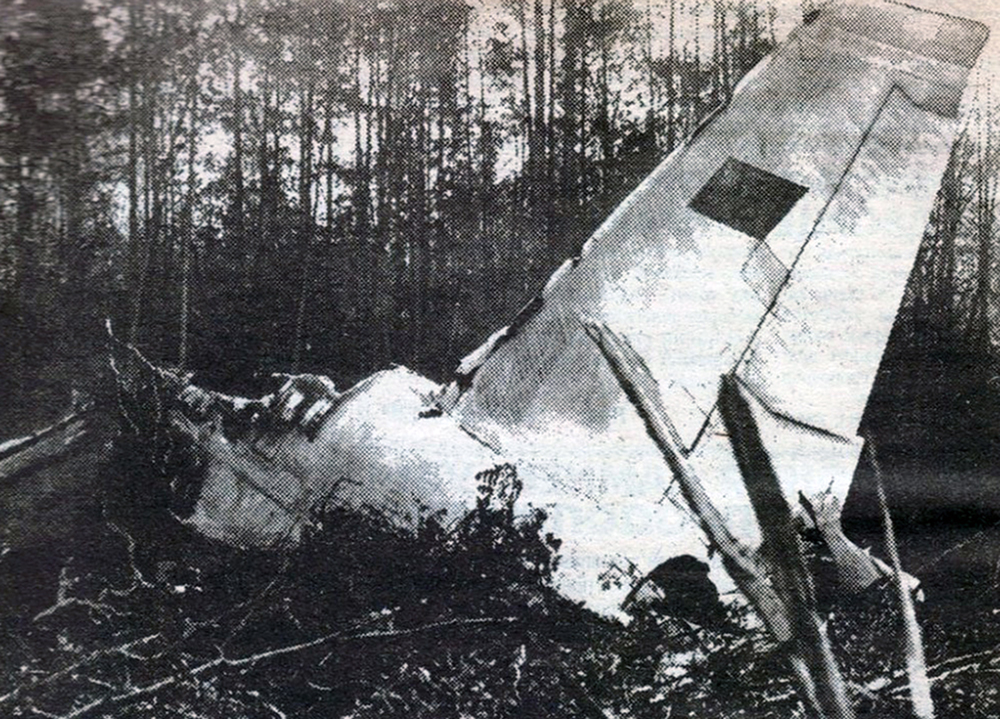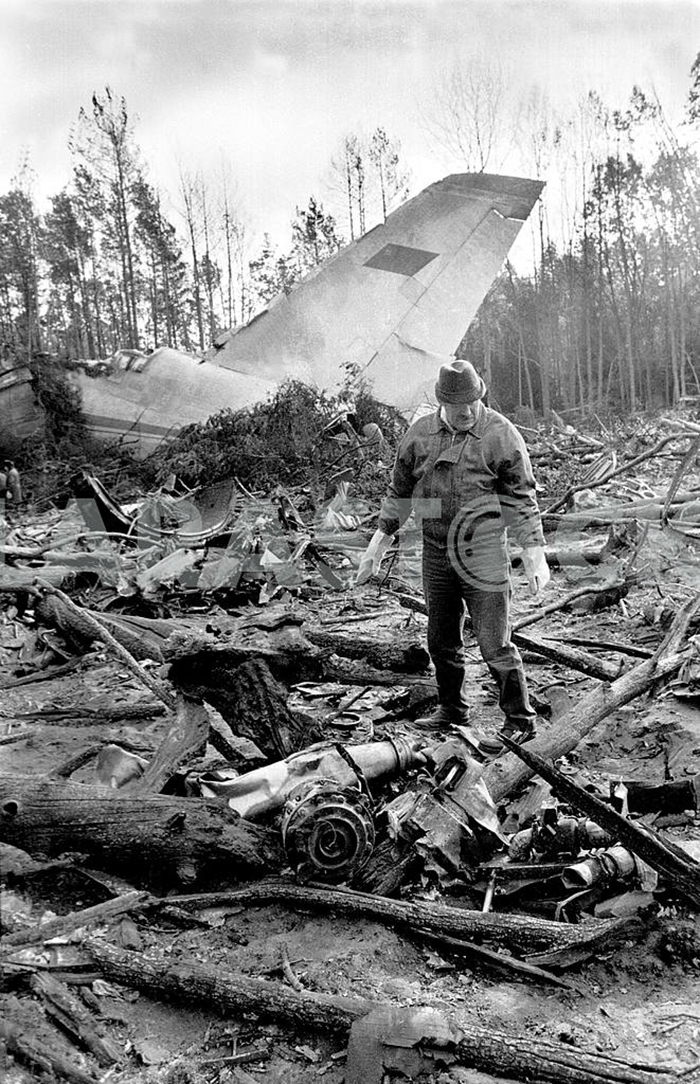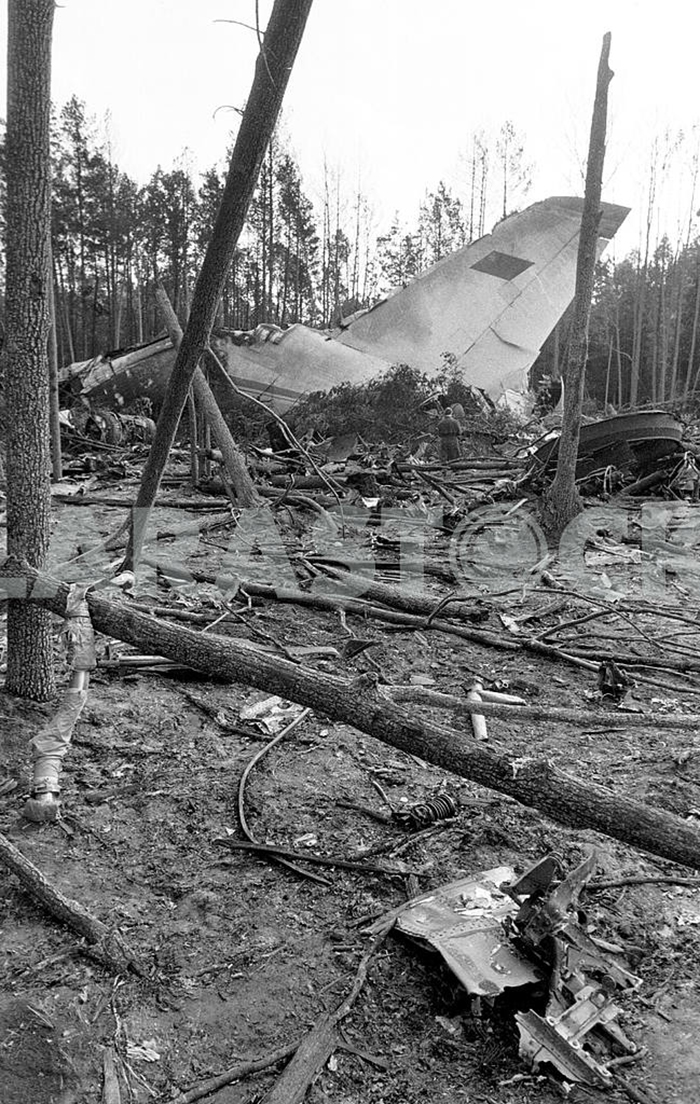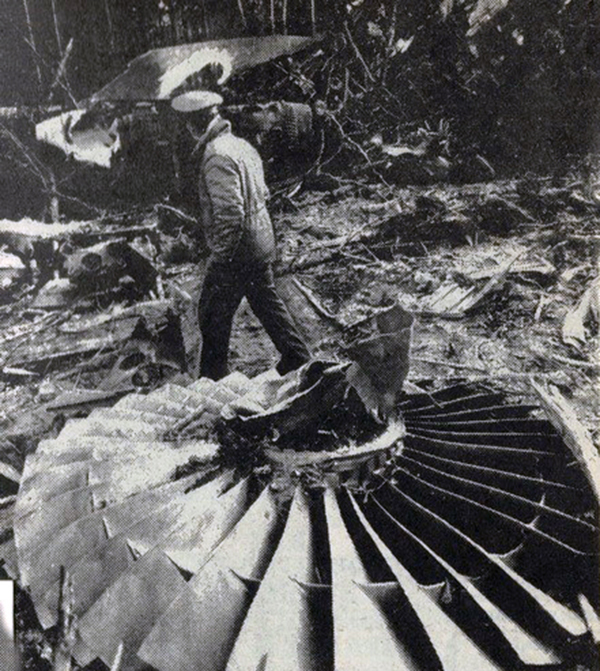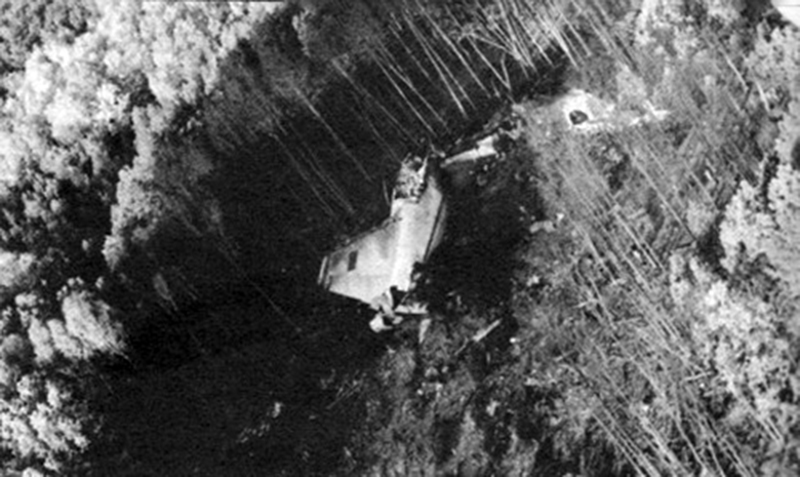Crash of an Antonov AN-124-100 in Irkutsk: 68 killed
Date & Time:
Dec 6, 1997 at 1442 LT
Registration:
08 black
Survivors:
No
Schedule:
Irkutsk – Vladivostok – Cam Ranh Bay
MSN:
4516003
YOM:
1992
Crew on board:
8
Crew fatalities:
Pax on board:
15
Pax fatalities:
Other fatalities:
Total fatalities:
68
Aircraft flight hours:
1034
Aircraft flight cycles:
576
Circumstances:
The four engine aircraft departed Irkutsk-2 Airport on a cargo flight to Cam Ranh Bay, with an intermediate stop in Vladivostok, carrying 15 passengers, eight crew members and a load consisting of two Sukhoi SU-27UB fighters to be delivered to the Vietnam Air Force. Three seconds after takeoff from runway 14 at Irkutsk-2 Airport, at a height of 5 metres, the engine n°3 failed. Six seconds later, at a height of 22 metres, both left engines n°1 and 2 also failed. The aircraft pitched up and entered a high angle of attack, climbed to a maximum height of about 66 metres then rolled to the left and crashed onto several buildings located 1,600 metres from the runway end. The aircraft was totally destroyed by impact forces and a post crash fire as well as several buildings. All 23 occupants and 45 people on the ground were killed. Hundred other people on the ground were injured, some seriously.
Probable cause:
The exact cause of the engine failure could not be determined with certainty. It is known that engines of this series had problems with gas-dynamic stability, especially at high angle of attack.
